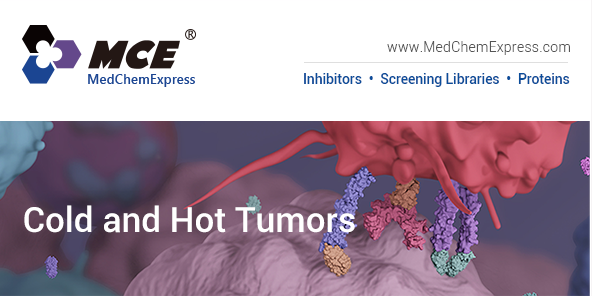
|
With the advent of
cancer immunotherapy
and
checkpoint inhibitors, significant progress has been made in targeting the host's
autoimmune response as an anticancer therapeutic intervention,
transforming the oncology immunity and cancer treatment field.
The unofficial classification of tumors into "cold tumors" and
"hot tumors" based on tumor immune microenvironment has been
developed. The hot tumor could induce a robust immune response
to allow immune cells to attack tumor cells[1]. How
could a cold tumor transformed into a hot tumor is a hot topic
of tumor immunotherapy. |
||||||||||||||||||||
|
What is a hot and cold tumor? |
||||||||||||||||||||
|
||||||||||||||||||||
|
|
||||||||||||||||||||
|
Figure 1. Cold and hot tumors[4] |
||||||||||||||||||||
|
How to turn a cold tumor into a hot tumor?
|
||||||||||||||||||||
|
T cell deficiency in cold tumors may be due to the following
reasons: lack of tumor antigens, APCs deficit (Antigen Presenting Cells), absence of T cell priming/activation, impaired trafficking of T cells to the tumor
mass[5]. According to the above factors, the
corresponding treatment strategies to transform cold tumors
into hot tumors will benefit patients[6,7]. For
example, NK cell therapy, radiotherapy, chemotherapy,
oncolytic virus therapy, vaccination,
cytokine therapy, etc. (Figure 2). |
||||||||||||||||||||
|
|
||||||||||||||||||||
|
Figure 2. Cold tumor treatment strategies[5]
|
||||||||||||||||||||
|
MedChemExpress — |
||||||||||||||||||||
|
MCE offers 20,000+ products and reagents for cancer research,
including TME-related products. |
||||||||||||||||||||
|
||||||||||||||||||||
|
References |
||||||||||||||||||||
|
[1] Qianqian Duan et al.,Turning Cold into Hot: Firing up the
Tumor Microenvironment. Trends in Cancer, 2020, 00467 No. of
Pages 14. |
||||||||||||||||||||


